Speak to one of our experts now about this offer
Call our India experts on0800 294 9707
Available until 5pm
Evening Bazaar, Cuisine & Crafts of Old Jaipur
Since the founding of Jaipur in 1727, its artisans and craftspeople have sold their respected creations and still use traditional methods to craft items today. Meet your local guide at Hawa Mahal, or ‘Palace of the Winds’, and walk through the bazaar as you chat to locals and try authentic street food. Taste freshly made pakora, samosa and traditional sweets and observe jewellers and silversmiths as they work at their craft.
Udaipur City Tour, Rajasthan
Udaipur is known more glamorously as the Venice of the East due to its many stunning manmade lakes. The city was founded by Maharana Udai Sing II in 1553 when he transferred the capital of the kingdom of Mewar from Chittorgarh to Udaipur. Nowadays you’ll find plenty of beautiful hotels here including the Lake Palace hotel which featured in the James Bond movie, Octopussy.
Start the morning at the City Palace overlooking Lake Pichola. It’s a beautiful location, chosen strategically for the protection given by the surrounding forests and hills. Maharana Udai Singh II first visited the palace while on a hunting trip. Reportedly he met a hermit who subsequently advised him to build a glorious capital where he could rule his descendants for centuries. Over 400 years, his successors made various additions to the complex forging the palace into the impressive structure you see today. The main attraction is the mor-chowk (peacock courtyard) decorated with tiny pieces of coloured glass and mirrors. You’ll find a museum with paintings, an armoury and one of the largest crystal collections in the country.
Afterwards, head to the banks of the Fateh Sagar Lake to Saheliyon Ki Bari, otherwise known as the Garden of the Maidens. It was reportedly built by the Maharana for his queen and her 48 royal ladies to enjoy themselves away from court. The queen and her entourage would arrive by palanquins, (carriages) and stroll, relax and play games. The site itself is very tranquil with fountains, lily pads and elephant statues.
Architectural Walking Tour
This tour is a great orientation of Jaipur; you’ll discover its architecture, religion and crafts and meet the locals, learning the stories and legends behind the city. Visit one of the city’s oldest temples, see the architectural sights of City Palace before immersing into some of Jaipur’s hectic markets.
Join a walking tour of UNESCO-listed Jaipur to learn about its architectural jewels. The tour starts at 8.30am when it’s peaceful, before the bazaars and markets take over. This is when locals go to worship and you can join them at one of the city’s oldest temples, which is known for its 300-year-old fresco painting and set in a private family home. This begins a discussion about religion and architecture in Jaipur; where at a junction in the city, you get to see a Jain Temple, a mosque and a Hindu temple.
Continue the walk at Broad Road, which was once used by the royal family, so it’s lined by grand houses. As you enter the winding by-lanes you’ll hear about Jaipur’s history as the first planned city in India, the vastu shastra and shilpa shastra architecture and havelis owned by artists, craftsmen and traders. You’ll get to meet some of these characters when you visit the metal-beating community who still work without technology, in the same way they have for 200 years. It’s fascinating to see how everything has been hand-created. Other key architectural sights on the tour include the City Palace, the Ayurvedic hospital and two huge, 10-foot-tall silver jars which belonged to a king of Jaipur. Guests love visiting a local family in their haveli to chat about life in Jaipur and meeting traditional bangle makers.
You will end the tour with an immersion into some of Jaipur’s hectic markets. There’s the spice market with over 300 shops which draws buyers from far and wide, followed by the vegetable and flower markets. The flower market is always busy with people shopping for weddings and festivals. This tour is a great orientation of Jaipur; you’ll discover its architecture, religion and crafts and meet the locals, learning the stories and legends behind the city.
Cooking Lesson at Dera Mandawa
Join a cooking class at a family home Dera Mandawa, a heritage property in central Jaipur. Located close to spice and vegetable markets there’s a chance to go with your hosts to shop for ingredients. People find the market fascinating - you’ll see piles of colourful spices and vendors sitting on their haunches weighing fresh fruit, women gossiping with their friends and locals shopping.
Back at the courtyard garden in Dera Mandawa, you’ll be handed recipes that you will be cooking that evening. The first task is to bake bread in the bio-gas ovens that are powered by cow-patty fuel. You will then move onto the five main dishes, which include paneer made from scratch with milk and a cheesecloth, mashed aubergine Indian style, a chicken or mutton dish and a vegetarian option. Family recipes are used and can cater to all diets, including vegan and gluten-free, using millet, corn and chickpeas.
Everyone has a chance to try their hand at cooking, or you can just watch. At the end of the class, you will have a regular sit-down meal together. The meal ends with a halva dessert which is different from the traditional recipe - it’s a mix of flour, brown sugar and mashed potato. This is a great interactive tour and you’ll leave with recipe ideas you can try at home.
Half Day Visit to Amber Fort
Jaipur has so many beautiful monuments, Amber Fort being the most impressive at 1,000 years old, located high on a hill, surrounded by the Aravalli mountains. The rampart is around 11km long and in some ways looks like the Great Wall of China.
Founded in the 16th century by the great commander of the Mughal rulers, Raja Man Singh, the whole palace is divided into four levels each with their own courtyard. Enter through the east-facing Sun Gate used by the maharajas and their VIP guests that in turn opens up to the first courtyard where victory parades would take place.
You will then go through the Singh Pol or the Lion Gate to the Hall of Public Audience filled with beautiful paintings, carved pillars and latticed marble. In the second courtyard, visit a beautiful hammam with stunning views of the Maota Lake below and Saffron Garden, constructed using the well-known star-shaped geometrical architecture attributed to the Mughals. Ganesh Gate, the entry point to the private palace of the maharajas, is one of the most beautiful gates in the world, decorated with countless fresco paintings and semi-precious stones. Inside the complex, you’ll find the Hall of Mirrors, adorned with a ceiling filled with mirror mosaics and colourful glass which used to glitter under candlelight.
Enter the Hall of Pleasure used as a summer retreat with white marble and walls made of sandalwood that would perfume the evening air. You can’t miss the oldest part of the Amber Fort where Man Singh’s 12 wives were kept in apartments. Each room has a secret passage to the maharaja’s palace!
Temples & Havelis of Old Jaipur
On this Jaipur walking tour, you’ll join locals for early-morning temple visits and have tea with families in their historic havelis. Jaipur is unique because it was the first planned city in India and many artists and craftsmen were invited to settle here. As you wander the streets of the walled city you can sample street food and see the mix of Bengali, Mughal and Hindu architecture.
The tour starts at 8.30am when it’s peaceful, before the bazaars and markets take over. This is when locals go to worship and you can join them at one of the city’s oldest temples, which is known for its 300-year-old fresco painting and set in a private family home. This begins a discussion about religion and architecture in Jaipur; where at a junction in the city, you get to see a Jain Temple, a mosque and a Hindu temple.
Continue the walk at Broad Road, which was once used by the royal family, so it’s lined by grand houses. As you enter the winding by-lanes you’ll hear about Jaipur’s history as the first planned city in India, the vastu shastra and shilpa shastra architecture and havelis owned by artists, craftsmen and traders. You’ll get to meet some of these characters when you visit the metal-beating community who still work without technology, in the same way they have for 200 years. It’s fascinating to see how everything has been hand-created. Other key architectural sights on the tour include the City Palace, the Ayurvedic hospital and two huge, 10-foot-tall silver jars which belonged to a king of Jaipur. Guests love visiting a local family in their haveli to chat about life in Jaipur and meeting traditional bangle makers.
You will end the tour with an immersion into some of Jaipur’s hectic markets. There’s the spice market with over 300 shops which draws buyers from far and wide, followed by the vegetable and flower markets. The flower market is always busy with people shopping for weddings and festivals. This tour is a great orientation of Jaipur; you’ll discover its architecture, religion and crafts and meet the locals, learning the stories and legends behind the city.
Supper on the Roof at Ikaki Niwas
When you visit this family home for a cooking experience, you’re greeted with a shower of petals. You will be shown around their temple and don't be surprised if some of the family albums come out. Then it’s up to the terrace for drinks and pakoras.
During the cooking demonstration you will be shown how to make a curry using local spices and the famous halva, a delicious pudding with carrot and cardamom. Dinner genrally starts with salad and a soup, followed by two vegetarian curries with seasonal vegetables such as eggplant, pumpkin or okra cooked with the all-important mustard oil. There will probably be a meat dish and of course rice and daal. There’s no family secret, just fresh ingredients most of which are sourced from the family farm outside the city.
The family will dine with you as it’s not just about cooking but the conversations. Your host is a political speech writer and his wife and sister can talk about local cultures and tradition.
Cook in a Blue House
This cooking experience takes place in a Jodhpur family home, a typical blue house with rooftop views over the city and Mehrangarh Fort. Your hosts are Brahmins and love to cook; the cuisine is vegetarian.
To start, you’ll learn how to make pakoras with tamarind and jaggery chutney served with masala tea, which you’ll enjoy on the rooftop looking out over the city. The mother of the house will lead the main cooking demonstration, translated by her husband who speaks fluent English. The dishes are made from seasonal vegetables such as eggplant, okra, cauliflower and cabbage. You’ll also make a dahl and chapati followed by a Rajasthan tali and to finish, a sweet such as halva.
Cooking skills have been passed down through the generations as in India cooking is done communally. You’ll also get to learn about the medicinal benefits of spices in Indian cuisine, for example, coriander is good for blood pressure and turmeric is good for your skin. Rather than buy a pre-mix masala, you will be shown how to make it fresh by mixing cardamom, black pepper and ginger. The whole experience takes about two hours, and you will be given handwritten recipes so you can recreate the meals when you get home.
Half Day Sightseeing Tour of the City
Jodhpur, the second largest city in Rajasthan, is also known as the Blue City. As soon as you step into the streets, you will see lanes of beautiful indigo-blue painted houses that belong to the Brahmins, the elite priestly caste of Hinduism.
On the way to Mehrangarh Fort which you’ll see located high on a hill above the city, a stop is made at Jaswant Thada, a royal cenotaph built in the later 19th century with white marble brought from the same quarry as that used for the Taj Mahal.
Head to the Mehrangarh Fort, founded by Maharaja Rao Jodha in the 15th century. This magnificent fortress was used as the private residence of the royal family. You enter through Jai Pol, meaning ‘Victory Gate,’ dedicated to the victory over the invading armies of Jaipur. After admiring some beautiful frescoes, walk through Fateh Pol where you can still see the cannonball marks from various attacks. Enter Shringar Chowk, a courtyard where the royal families were coronated. There’s a wonderful museum in which you can see all the elaborate howdahs (seats) that were fastened onto the maharaja’s elephants, made of silver, gold and delicate ivory work. The Flower Palace is another museum highlight with frescoes, miniatures and 24-carat gold leaf work.
The Bandhani Art of Jodhpur
Visit a home in Jodhpur to learn the ancient art of Bandhani – tie dye practiced by the people of Rajasthan and Gujarat. There are about 700 to 800 Muslim families in Jodhpur who practice the Bandhani technique on a daily basis and have been catering to merchants and wholesalers for centuries.
Your host for this tour learnt the skill from his grandfather. Tie dye has a long history in India that has evolved over time, from the days when only natural paints and hand-drawn designs were used to today’s modern stencils and paints that offer unlimited designs. Every piece created is unique and the most complicated designs can take up to 15 days to complete.
You will visit the workshop and learn about the textile traditions in India. During the demonstration the raw fabric, normally cotton or silk, is cut, folded and secured with stitches. A pattern is marked with iron stencils before tying knots in the fabric. You can then choose the colours and dip the fabric into the dye before the grand reveal of the final design.
Truck Painting Experience
Learn about India’s truck painting tradition at a family workshop in Jodhpur. s you drive through India, you’ll notice trucks decorated with all kinds of colourful pictures and slogans. The practice started to comfort homesick drivers who spend months at a time on the road and miss their families. When you visit the truck painters of Jodhpur, they’ll tell you about their family history and you’ll get to watch them work and even have a go at truck painting yourself.
Raja is a professional truck painter and along with his six brothers has been painting trucks in Jodhpur for 30 years. As a team, it takes them up to five days to decorate one vehicle, depending on its size and how detailed the design is. Visitors really enjoy this interactive experience and have lots of questions about their proud family tradition. After this tour you’ll see trucks with a completely different view.
Cooking Lesson at Dakshu's Place
Join Rakshita in her family home for a cooking class, where she’ll teach you how to make some of Rajasthan’s signature dishes. Rakshita has always been passionate about food and loves to share the recipes passed on to her from her family. As Rajasthan is quite a dry state there aren’t many fresh greens, so lots of the dishes are made from lentil powder, including laal maas, a mutton recipe.
The lesson begins with a trip to the vegetable market with Rakshita in her vintage Jeep. It’s a vibrant farmer’s market where you can pick out whatever ingredients you would like Rakshita to build a menu around. She’ll teach you about the different spices on offer; in Rajasthan, everything from cumin and mustard seeds to fennel, chilli and turmeric are grown. These all have medicinal values and are a big part of Indian cuisine.
Back at the home you’ll have a cup of chai before starting to cook. As you chop vegetables and prepare the dishes, you’ll talk about the customs and rituals of Indian cuisine. The menu depends on the seasonal ingredients you’ve chosen but popular dishes include a light gatta curry and kadhi, a soup prepared with buttermilk and chickpea flour.
When everything is cooked, you’ll sit down for a meal together and chat about life in India. People are interested in what it’s like to live with an extended family and love coming to a real Indian household to meeting the family. At the end of the session Rakshita will hand out recipes, so you can recreate them when you return home.
Sorry, your hotel is no longer available
Please check alternatives
-
{{item.body}}
-
{{item.body}}
Choose a departure date
{{store.searchDuration}} nights
Enter rooms & guests
Checking prices & availability

{{term}}, {{formattedDate}} for {{searchDuration}} nights
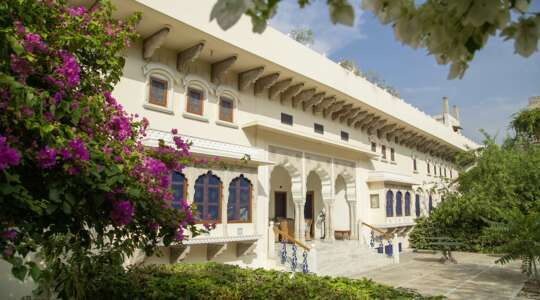
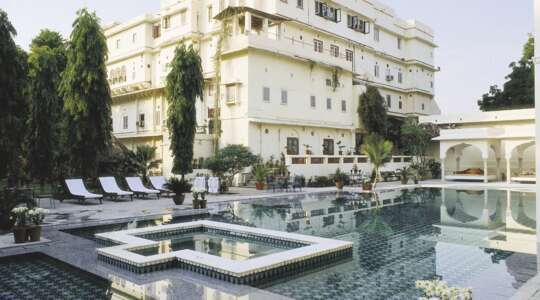
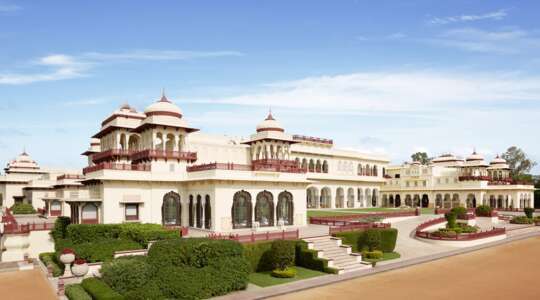
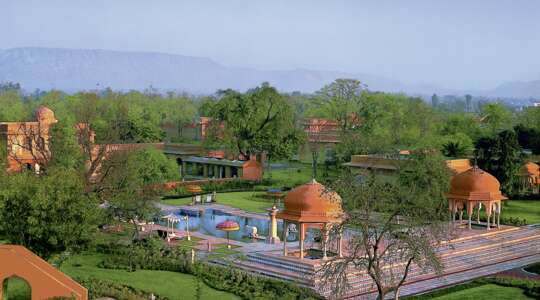
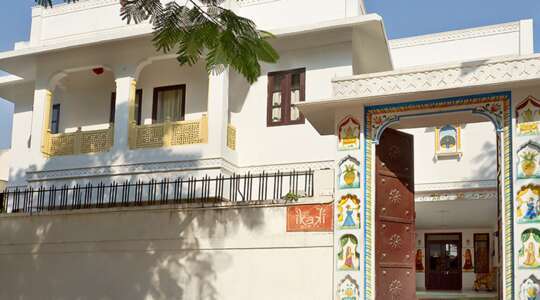
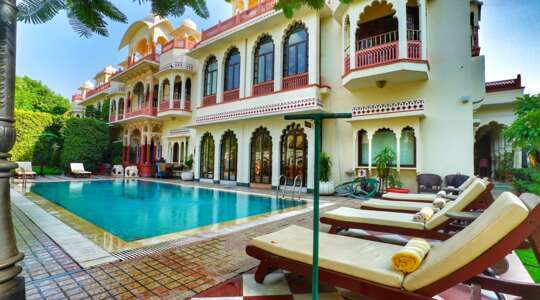
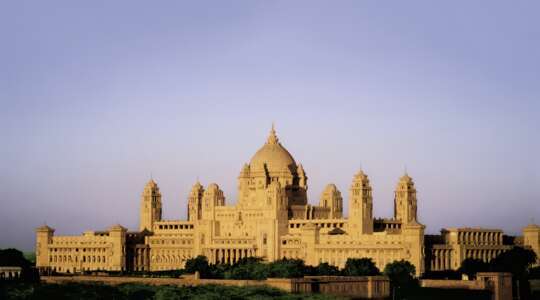
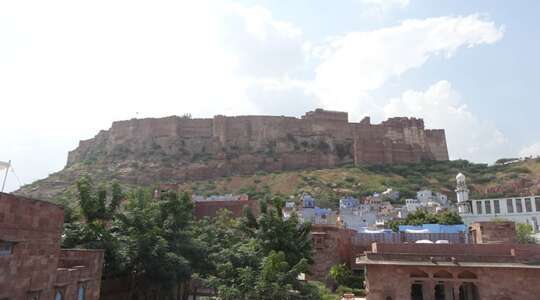
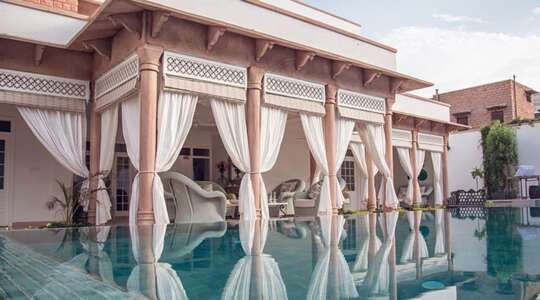
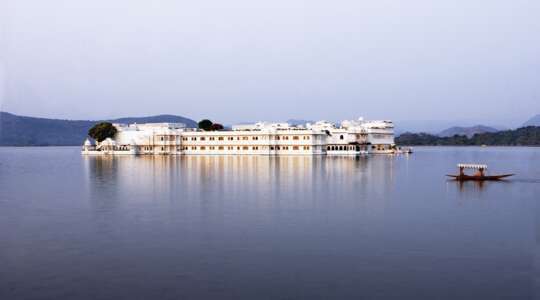
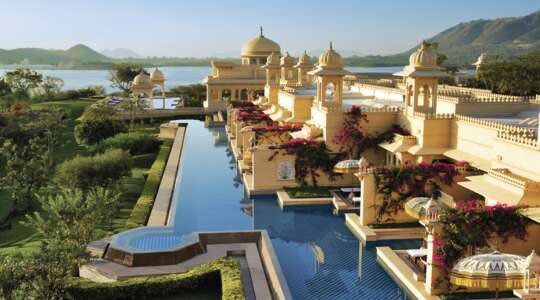
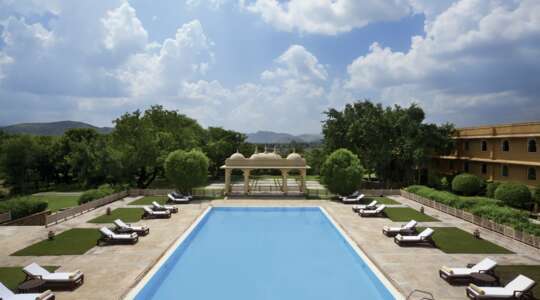
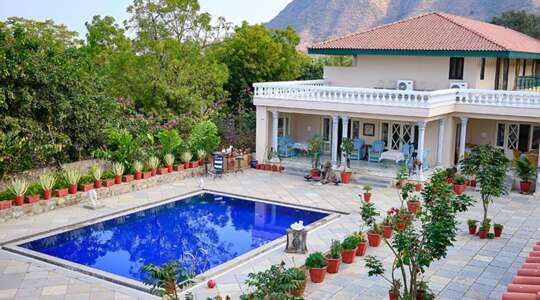
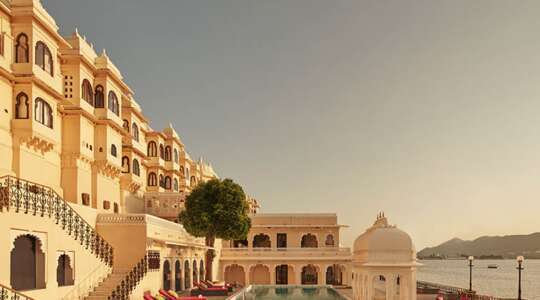

_w=24_h=25.webp?v=11cbf9448902371bca1085014eba9ac82a696589)
_w=24_h=25.webp?v=11cbf9448902371bca1085014eba9ac82a696589)
_w=24_h=25.webp?v=11cbf9448902371bca1085014eba9ac82a696589)